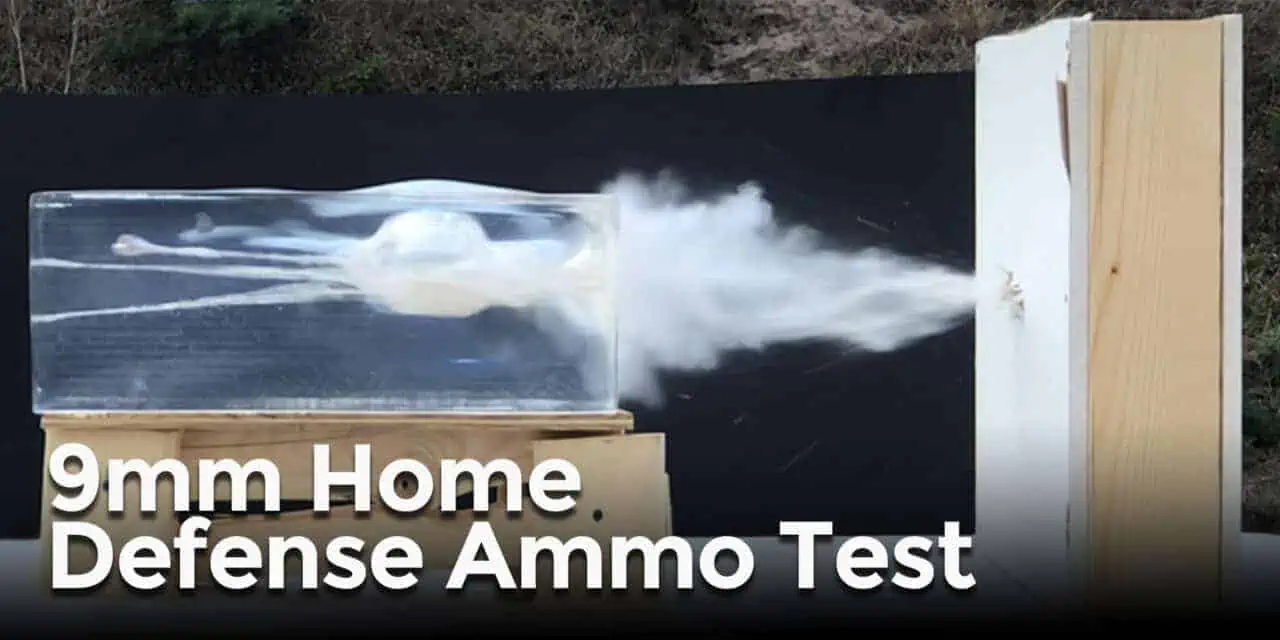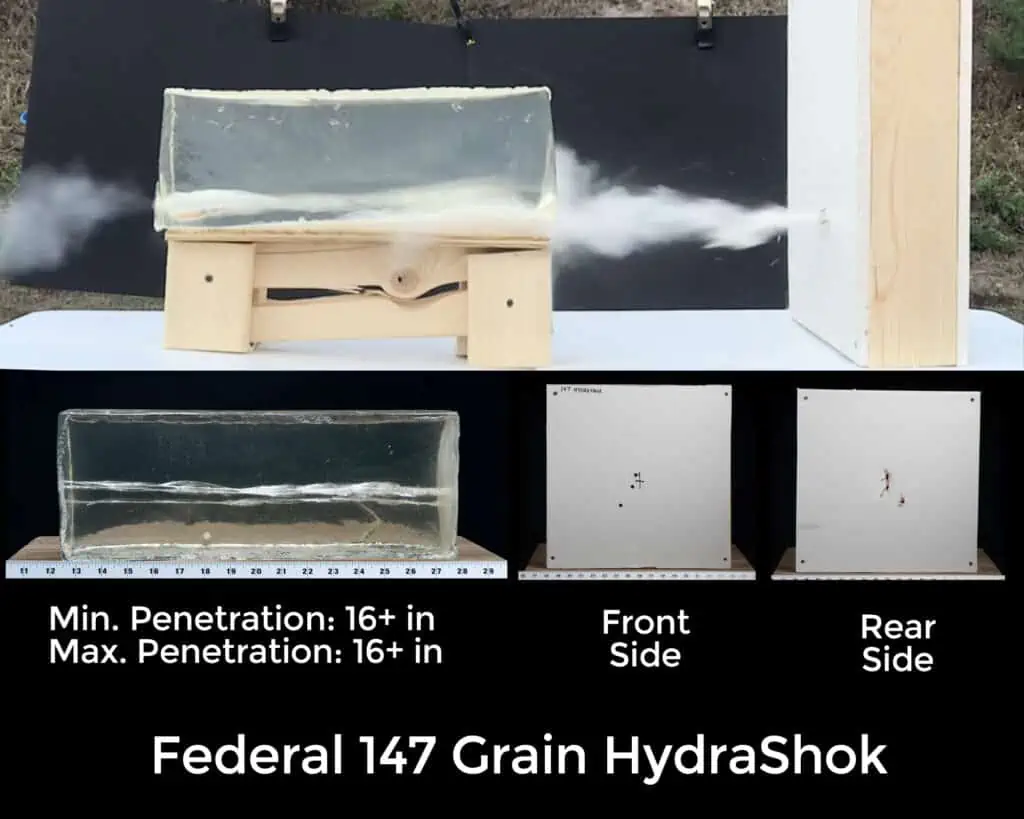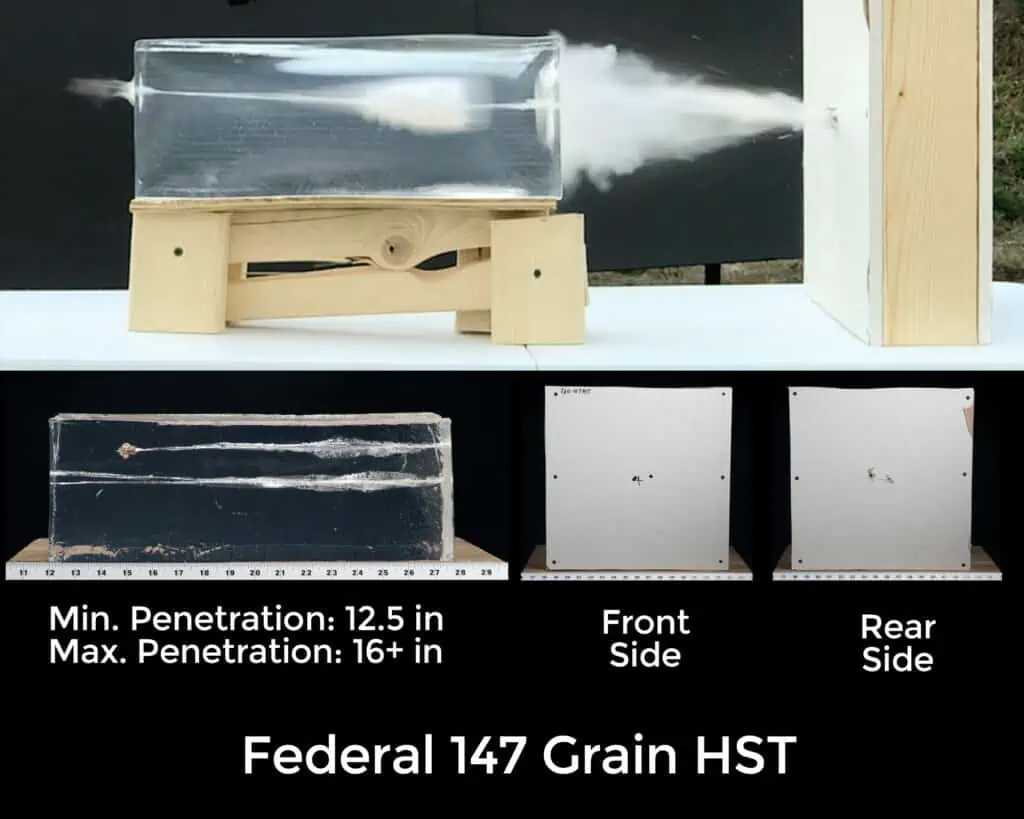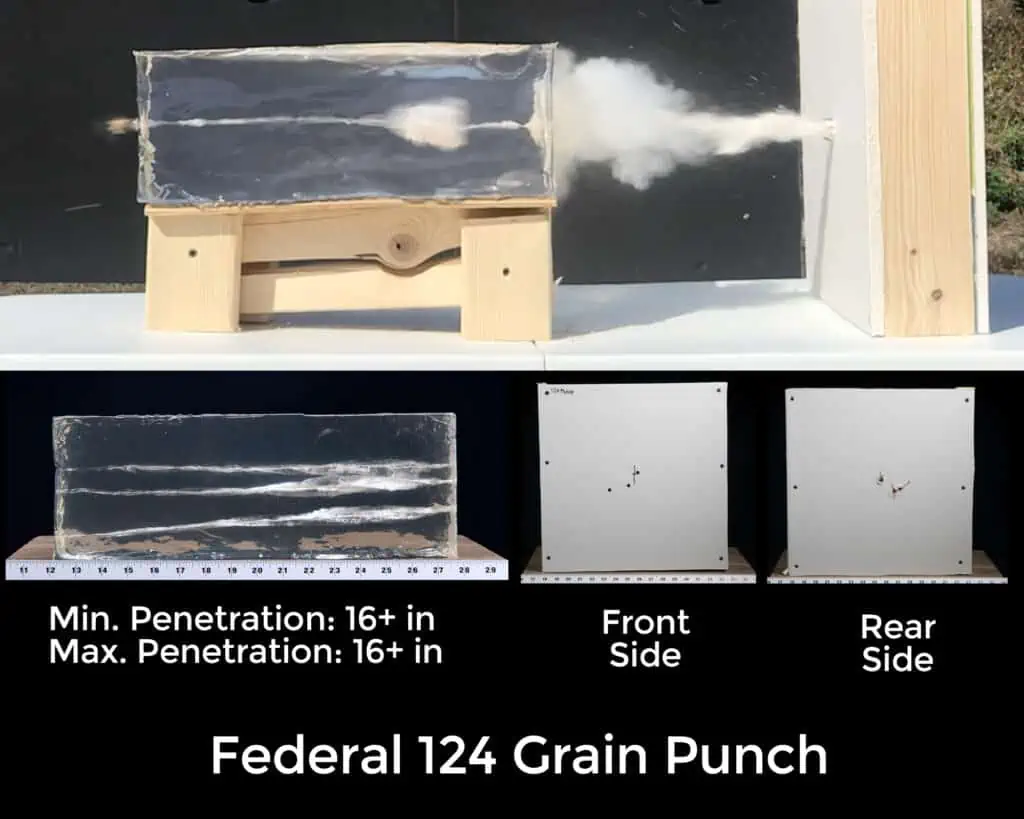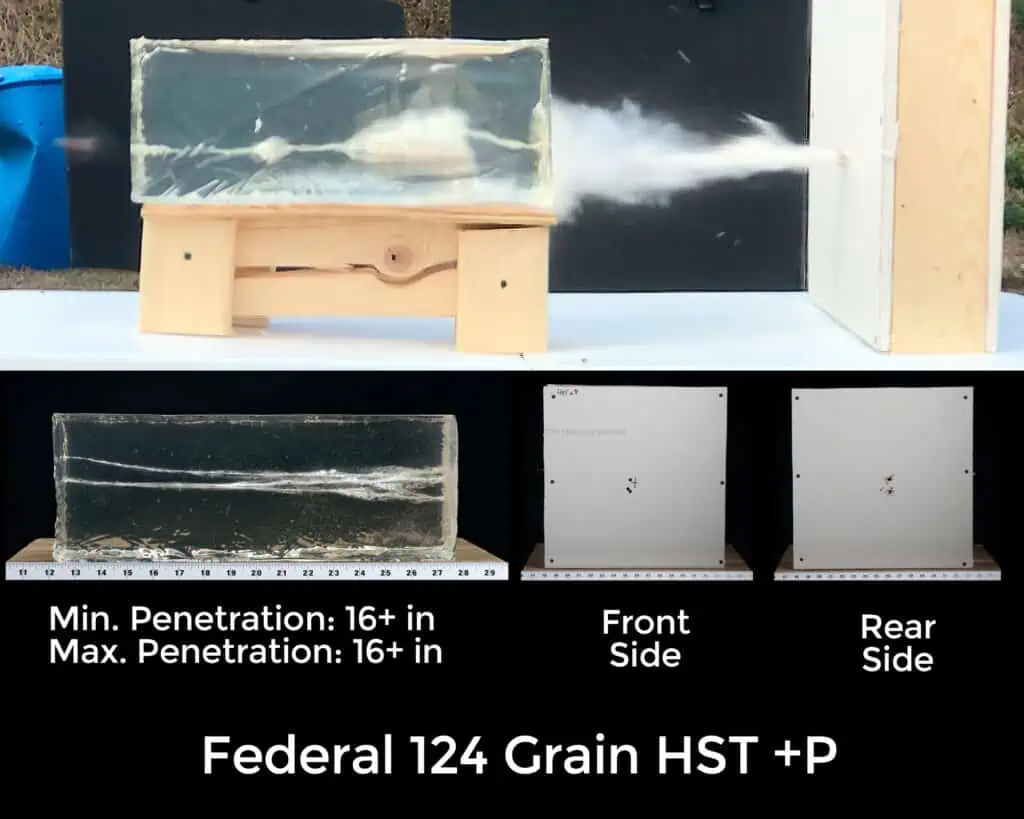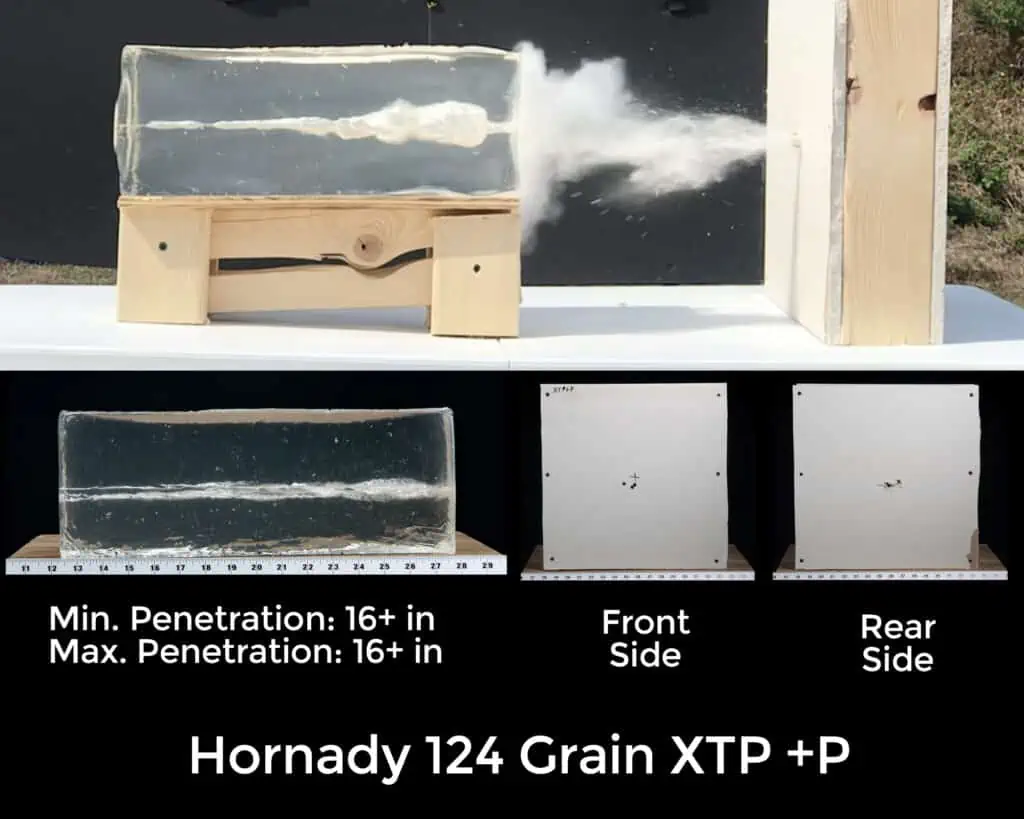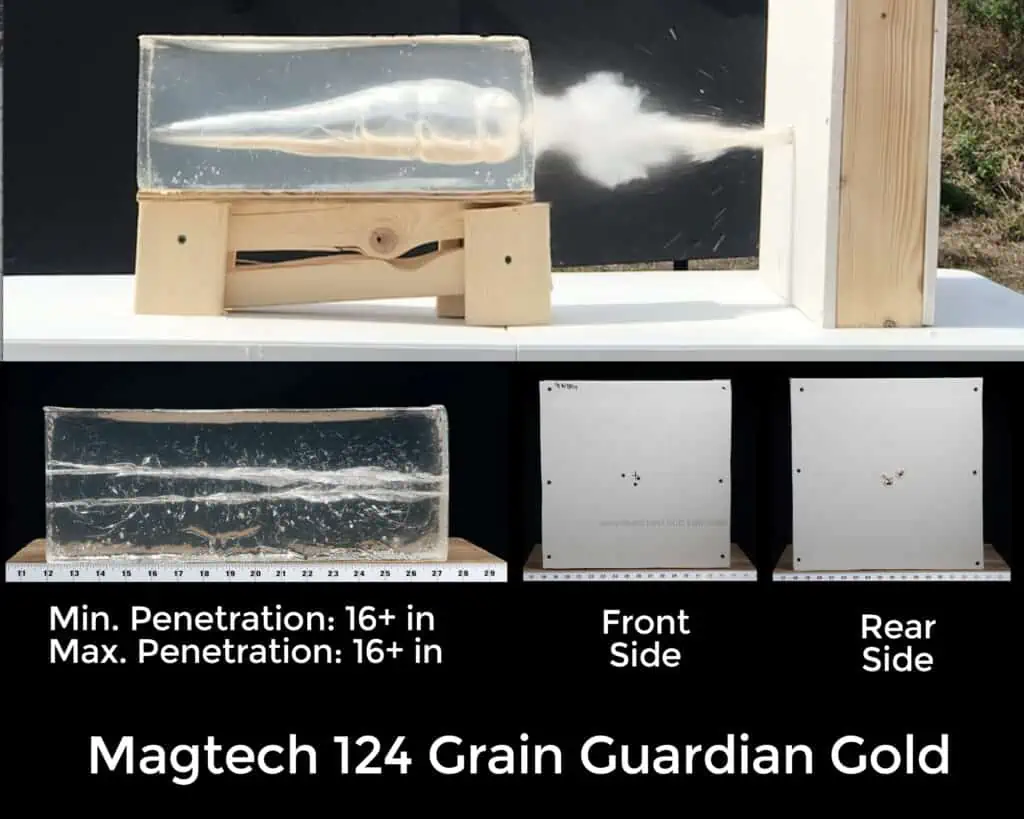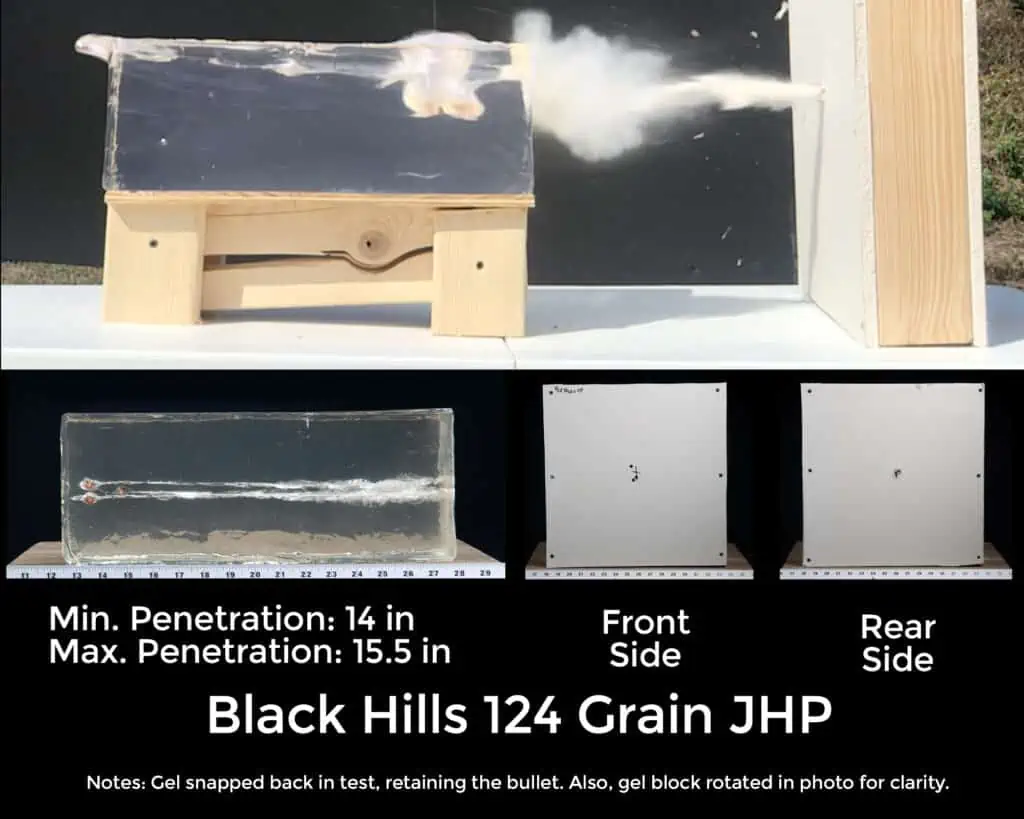Testing 9mm Home Defense Ammo
One of the reasons why sports utility vehicles have risen in popularity as of late is because they are so flexible. For instance, an SUV holds more stuff than a sedan, but it is more secure than the open bed of a pickup. They are sort of a “do it all” vehicle that can be adapted to almost any task you ask of it.
In many ways, the 9mm pistol is the sports utility vehicle of guns. There are better guns out there for close-range defense, and guns with much more power and longer range. But a pistol can always be near you and is there when you need it the most. It may not be ideal for any one task, such as home defense, but it does the job. Ammo is an important part of making sure your pistol is up to whatever task you ask of it, which is why we’re looking at 9mm home defense ammo today.
Let’s begin with a reminder that you really want to use hollow point bullets for this sort of thing. A hollow point (JHP) round will open up as it hits tissue, dumping all its energy into the target. Full metal jacket (FMJ) rounds are not designed to do this. Rather, they’re designed to sail through whatever they hit. FMJ rounds typically cost less than JHP rounds. That’s why we practice with FMJ bullets, but carry JHP in our guns.
What To Look For In 9mm Home Defense Ammo
There are two tasks that a round of 9mm home defense ammo needs to perform. The first is to stop the threat. The second is to inflict as little damage as possible if you miss. Time and time again, modern 9mm JHP rounds have proven themselves to be able to stop the threat and save innocent lives. A pistol round, any pistol round, is probably not going to stop the fight with one shot. More rounds headed downrange means more opportunities for a missed shot. This, in turn, means there are more chances for a round to hit someone and potentially cause a tragic outcome.
To see what happens if 9mm ammo misses its intended target and goes through an interior wall, we’re going to re-create the interior of a typical American home. We’ll set up two 16 inch square sheets of ½ inch drywall separated by 2×4 studs as the first target. This will represent a typical wall found inside the home. One foot behind that wall is a block of Clear Ballistics gel, a very common testing medium which gives us an idea of what a round might do to a human body. Finally, there is a larger, four foot square interior wall placed 12 feet behind the first wall, a distance that represents the size of a typical American bedroom.
9mm Home Defense Ammo Interior Wall Penetration Test
We’ll be using a stock Glock 19 in our test, firing at the first wall from 10 feet away. We’ll also have a digital chronograph set up at the muzzle to measure the velocity of each round. The specific types of 9mm home defense ammo we’ll be testing are:
- 147 grain Federal Hydra Shok
- 147 grain Federal HST
- 124 grain Federal Punch
- 124 grain Federal HST +P
- 135 grain Hornady Critical Duty
- 124 grain Hornady XTP +P
- 124 grain Magtech Guardian Gold
- 124 grain Speer Gold Dot +P
- 124 grain Black Hills JHP
9mm Home Defense Ammo Test Results
147 grain Federal HydraShok
Average Muzzle Velocity: 991 fps
Minimum Gel Penetration: 16+ inches
Maximum Gel Penetration: 16+ inches
Struck Rear Wall: Y
Penetrated Rear Wall: Y
The 147 grain HydraShok was the only round we tested that had all three bullets pass through the first wall, the ballistics gel and also the rear wall. This indicates they did not expand on impact and slow down and may indeed cause further mayhem along the way.
147 grain Federal HST
Average Muzzle Velocity: 962 fps
Minimum Gel Penetration: 16+ inches
Maximum Gel Penetration: 16+ inches
Struck Rear Wall: Y
Penetrated Rear Wall: N
Federal’s 147 grain HST round is a proven performer, especially in shorter barrels like our Glock 19. Each of the three rounds we tested drove through the first wall and the gel. They struck the rear wall, but did not penetrate any further.
124 grain Federal Punch
Average Muzzle Velocity: 1139 fps
Minimum Gel Penetration: 16+ inches
Maximum Gel Penetration: 16+ inches
Struck Rear Wall: Y
Penetrated Rear Wall: N
The “Punch” round is a new offering from Federal, and its performance matched the heavier standard velocity HST round. All three of the Punch rounds punched (sorry, couldn’t resist) their way through the first interior wall and the gel. They struck the rear wall, but did not have the energy to penetrate a sheet of drywall.
124 grain Federal HST +P
Average Muzzle Velocity: 1219 fps
Minimum Gel Penetration: 16+ inches
Maximum Gel Penetration: 16+ inches
Struck Rear Wall: Y
Penetrated Rear Wall: N
All three rounds of HST +P penetrated the first interior wall and the gel. However, all three rounds only made small dents in the rear wall, indicating that they had very little power left after passing through our testing materials.
135 grain Hornady Critical Duty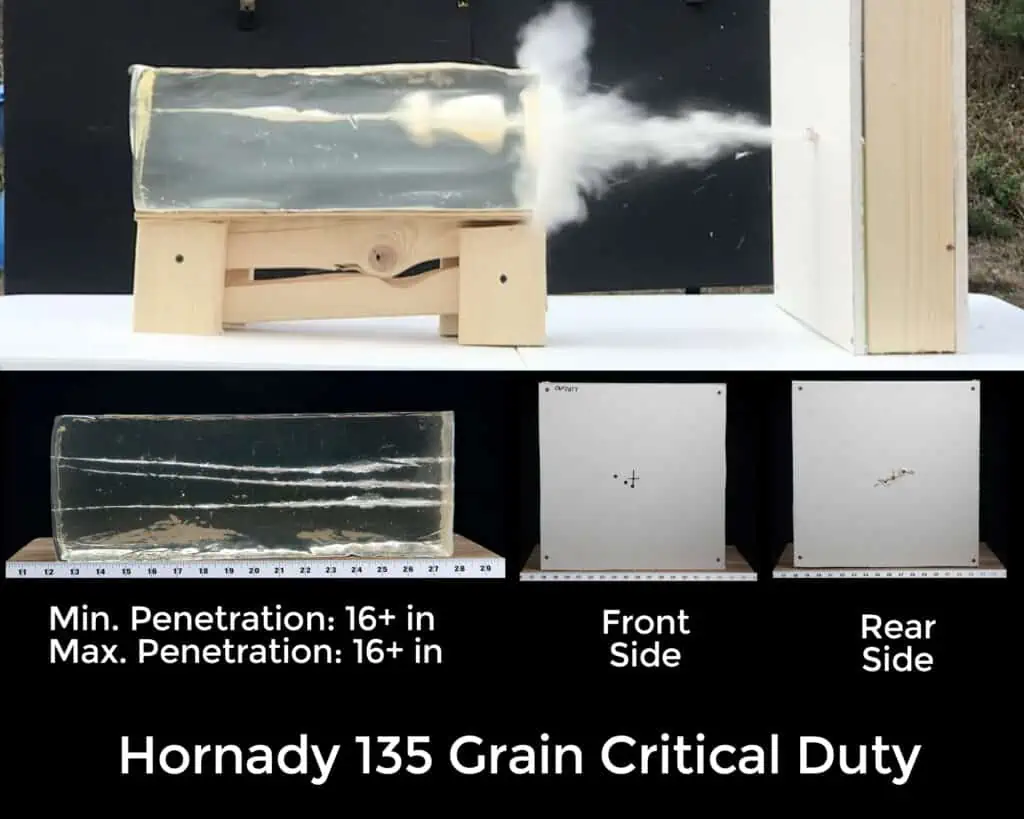
Average Muzzle Velocity: 1000 fps
Minimum Gel Penetration: 16+ inches
Maximum Gel Penetration: 16+ inches
Struck Rear Wall: Y
Penetrated Rear Wall: Y
The Critical Duty bullet is different from the other hollow point rounds in our test. It’s not actually hollow. Rather, it has a small polymer plug inside the cavity at the end of the bullet. This plug is meant to help the bullet expand when it hits the target, slowing it down. In our test, however, Critical Duty bullets were one of the few bullets to penetrate through all our testing material.
124 grain Hornady XTP +P
Average Muzzle Velocity: 1216
Minimum Gel Penetration: 16+ inches
Maximum Gel Penetration: 16+ inches
Struck Rear Wall: Y
Penetrated Rear Wall: Y
The Hornady XTP is known for its ability to penetrate, and that was proven in our test. All of the rounds went through the first two parts of our test and impacted the rear wall. Two of the rounds were stopped by the second sheet of drywall on our mocked-up interior wall. One round, however, went through both sheets and impacted the berm in our test bay.
124 grain Magtech Guardian Gold
Average Muzzle Velocity: 1117
Minimum Gel Penetration: 16+ inches
Maximum Gel Penetration: 16+ inches
Struck Rear Wall: Y
Penetrated Rear Wall: Y
One of the Guardian Gold bullets we tested penetrated both sheets of drywall in the first wall, the ballistics gel and then went through the first sheet of drywall at the rear. The other two bullets struck the rear wall after passing through the first wall and gell, but went no further.
124 grain Speer Gold Dot +P
Average Muzzle Velocity: 1146
Minimum Gel Penetration: 16+ inches
Maximum Gel Penetration: 16+ inches
Struck Rear Wall: Y
Penetrated Rear Wall: N
Gold Dots are a known and trusted defensive round. The three bullets of 124 grain +P version we tested went through the first wall and the ballistic gel. One bullet struck the rear wall 12 feet away but did not penetrate the drywall, one penetrated the drywall, and one deviated so much it did not strike the rear test wall.
124 grain Black Hills JHP
Average Muzzle Velocity: 1000 fps
Minimum Gel Penetration: 14 inches
Maximum Gel Penetration: 15.5 inches
Struck Rear Wall: N
Penetrated Rear Wall: N
This was the only 9mm home defense round we tested where all three bullets did not completely penetrate the ballistics gel. The Black Hills ammo we tested is topped with a Hornady XTP bullet. That same bullet in a more-powerful +P loading, blew right through the gel and one of the sheets of drywall that was 12 feet away.
Limitations Of The 9mm For Home Defense
I am a big fan of starting out with a compact 9mm pistol. They really can do it all, but as the saying goes, “Jack of all trades” means you’re a master of none. The purpose of the block of ballistics gel behind the first wall was to see what the effects of a missed shot would be inside of your home. All of the rounds we tested did catastrophic damage to that gel. All of a sudden, gun safety Rule Four starts to make a lot more sense. If you’re not sure if a loved one is behind a wall in your home or not, don’t take the shot, because based on these results, they would be in a world of hurt if you miss.
The 147 grain HydraShok was the clear loser in this test. All three bullets of that round penetrated both walls and the ballistics gel. This means that those bullets could go through not just one room of your home, but other rooms as well and cause even more damage. If you’re thinking of using this round as your 9mm home defense round of choice, you might want to consider other options.
What other options are out there? Well, based on this test we did earlier here at the School of Guns and other tests I’ve seen, I use Federal HST rounds in my carry gun. My second choice would be the Speer Gold Dot round. This round performed well when we looked at the performance of +P ammo vs standard velocity rounds, and I’d have no issues carrying it on a regular basis.
Getting To The Bottom Line
My third choice would be the Hornady Critical Duty round. Even though two of the rounds penetrated every barrier in our test, it’s a proven a 9mm defensive round, especially if you live somewhere like New Jersey, which bans armed citizens from owning hollow point rounds.
What this test really shows, though, is the need to be trained and competent with your 9mm pistol of choice. Take a class that goes beyond the basics. Learn how to shoot under stress. Learn how to manipulate your gun so it becomes second nature to you. Above all, learn the rules of gun safety, and keep your gun stored safely in your home, because protecting innocent lives is what it’s all about.

